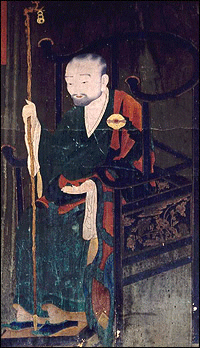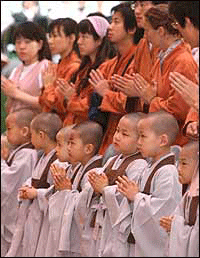Master Jinul (1158-1210) of the Goryeo Kingdom – together with Master Wonhyo of the Silla Kingdom – is one of the two most important figures in the history of Korean Buddhism.

Master Jinul is seen as the founder of the Korean “Seon” (in Japanese, Zen) School and there is ample evidence for the significant influence that he had on important aspects of Korean Buddhist doctrine and practice.
Jinul passed the royal examination for monks at age 24. At that time, the exam was held on a national level as a system for qualifying monks to take up official positions or become abbots of monasteries and temples.
So passing this exam was a gateway to a successful career in the community of Buddhist monks.
Yet, Jinul gave up the career offered to him and joined a Seon community in Boje Temple.
He had entered the Buddhist order at a time of crisis in Korean Buddhism, in terms of doctrinal and philosophical disputes as well as political corruption that had crept into the monastic system.
Thus Jinul established, at Boje Temple, a new movement which he called the “Concentration and Wisdom Community,” wherein he encouraged the participants to form “a retreat community dedicated to the development of ‘Samadhi’ (concentration) and ‘prajna’ (wisdom).”
Herein specific meditation techniques were used to gain concentration, while other specific techniques were applied to gain wisdom.
This is a standard formula in Indian Buddhism and Jinul insisted that both wisdom and concentration must be practiced simultaneously to achieve an awakening.
But Jinul also encouraged the study of Buddhist principles as found in the Buddhist texts (sutras) and sutra commentaries. He insisted that such study was a necessary component of Buddhist cultivation.
He took this stance amidst arguments on the nature of meditation in the community of monks, who were divided between a Seon meditation view and doctrinal and scholastic views.
Thus we see that at this critical juncture Jinul took a middle path and this laid the foundation for the teaching and practice of Korean Seon, which exists to the present day.
Korean Seon is a tradition that integrates the study of sutras and commentaries with strong meditation practice.
Of interest here is that Jinul is understood to have had significant enlightenment experiences through his study and contemplation of a passage in sutras.
This was somewhat different than the normal Seon approach that is often characterized as a “mind-to-mind transmission.” In this method, there is a lack of normal, logical verbal or literary communication.
Such transmissions are the result of the master-student relationship that focuses on the use of the “gong-an,” a question that may not have a logical answer. A famous “gong-an” is, “What is the sound of one hand clapping?”
At this period in Korean Buddhist history, Seon principles advocated sudden enlightenment as the most effective path of awakening. However, there were pros and cons regarding how to continue practice after experiencing awakening.
The principle of Sudden Enlightenment points to a sudden realization of “emptiness” and hence a sudden experience of wisdom. Monks on one side of this felt (and feel) that once sudden awakening is experienced, there is no further need for meditation practice.
On the other side, Jinul rejected this view and guided monks to continue meditation practice after the awakening experience, thereby maturing, in a step-by-step process, in wisdom gained through sudden enlightenment.
This sudden-gradual argument had polarized the community of monks and, in short, Jinul ultimately won the day with his emphasis on continued meditation.
Concerning the experience of awakening, Jinul taught that it was sparked by the deep and transformative experience of seeing that all phenomena in the universe are “empty,” and that all phenomena are “non-constant”; they have no inherently, unchanging aspects.

One metaphor that he used to express his idea was that of the morning dew and the sunshine. Before the sun rises, the cool morning grass is wet with dew.
One can try but it’s hard to wipe away the dew as it continues to reappear; it seems to be permanent.
However, once the sun rises and one wipes the dew away, it will cease returning; in effect, it is not permanent. In the same way, once one has had an awakening experience, efforts to more fully eradicate negative habits, which is the basis of Buddhist meditation, will be more fruitful.
In 1210, Master Jinul passed away during one of his Dharma talks while holding his staff of office. Afterwards, a pagoda named “Sweet Dew” was constructed to commemorate him and he was posthumously given the title of National Teacher.
Author : Chun Ock-bae
Source : http://www.koreatimes.co.kr




